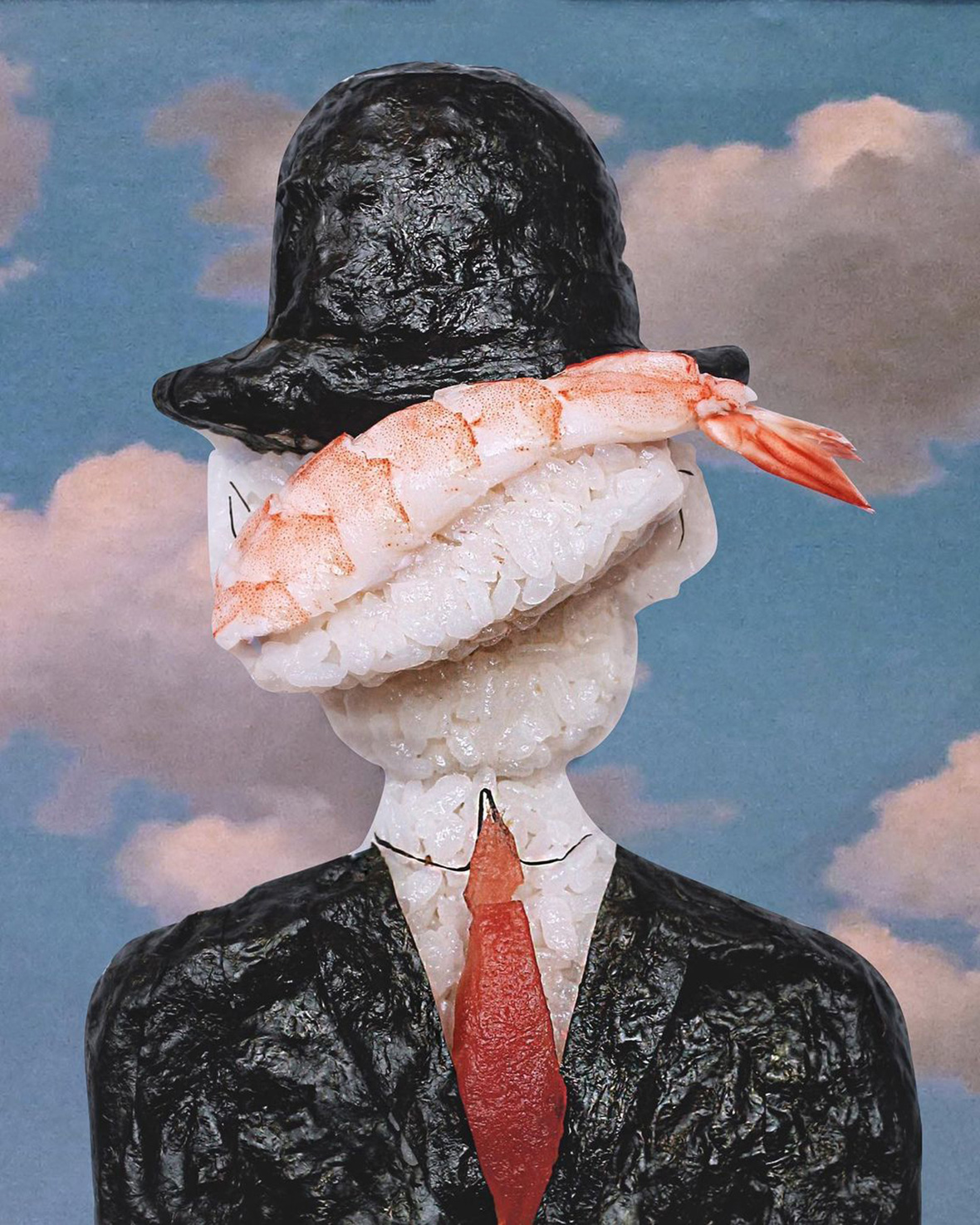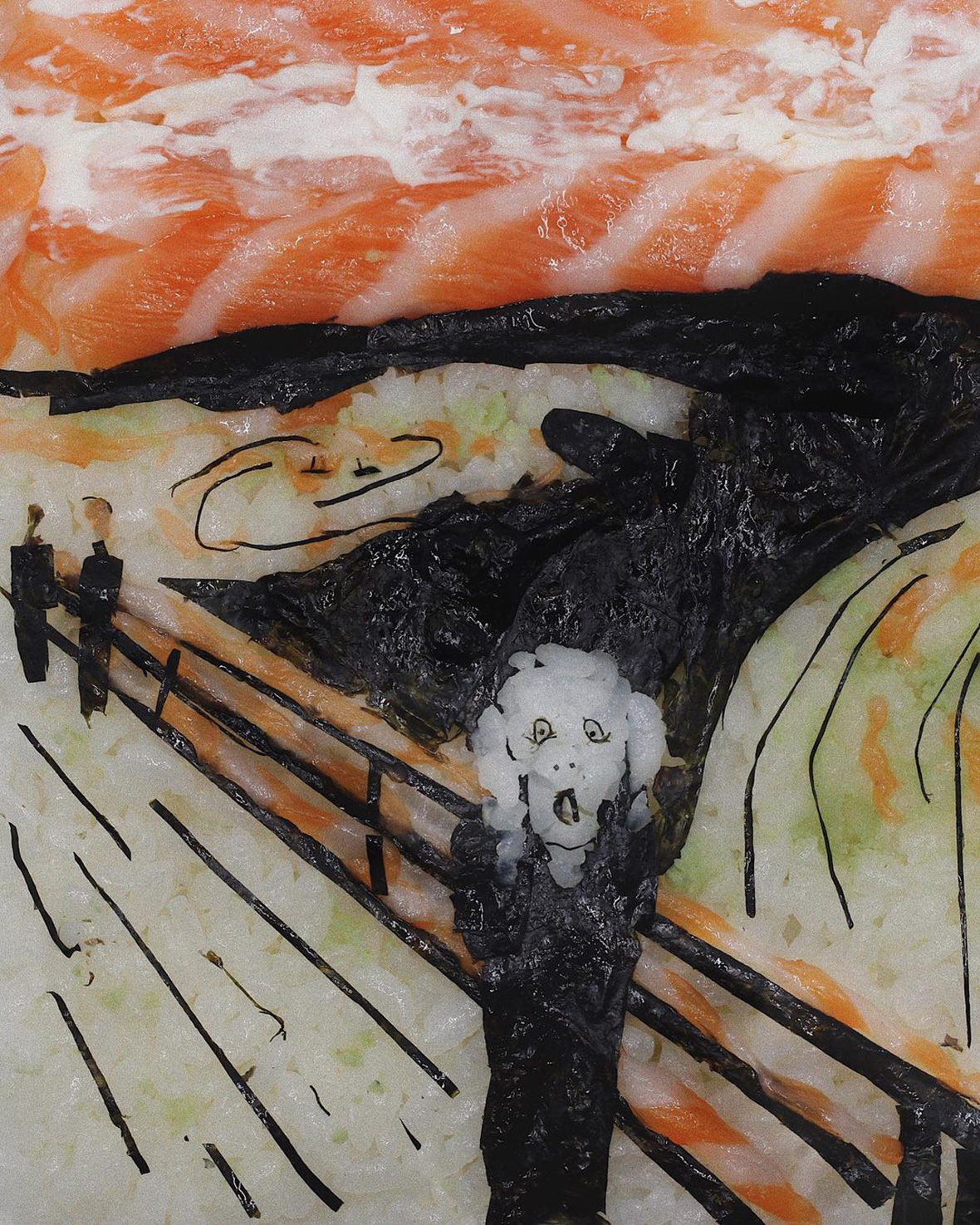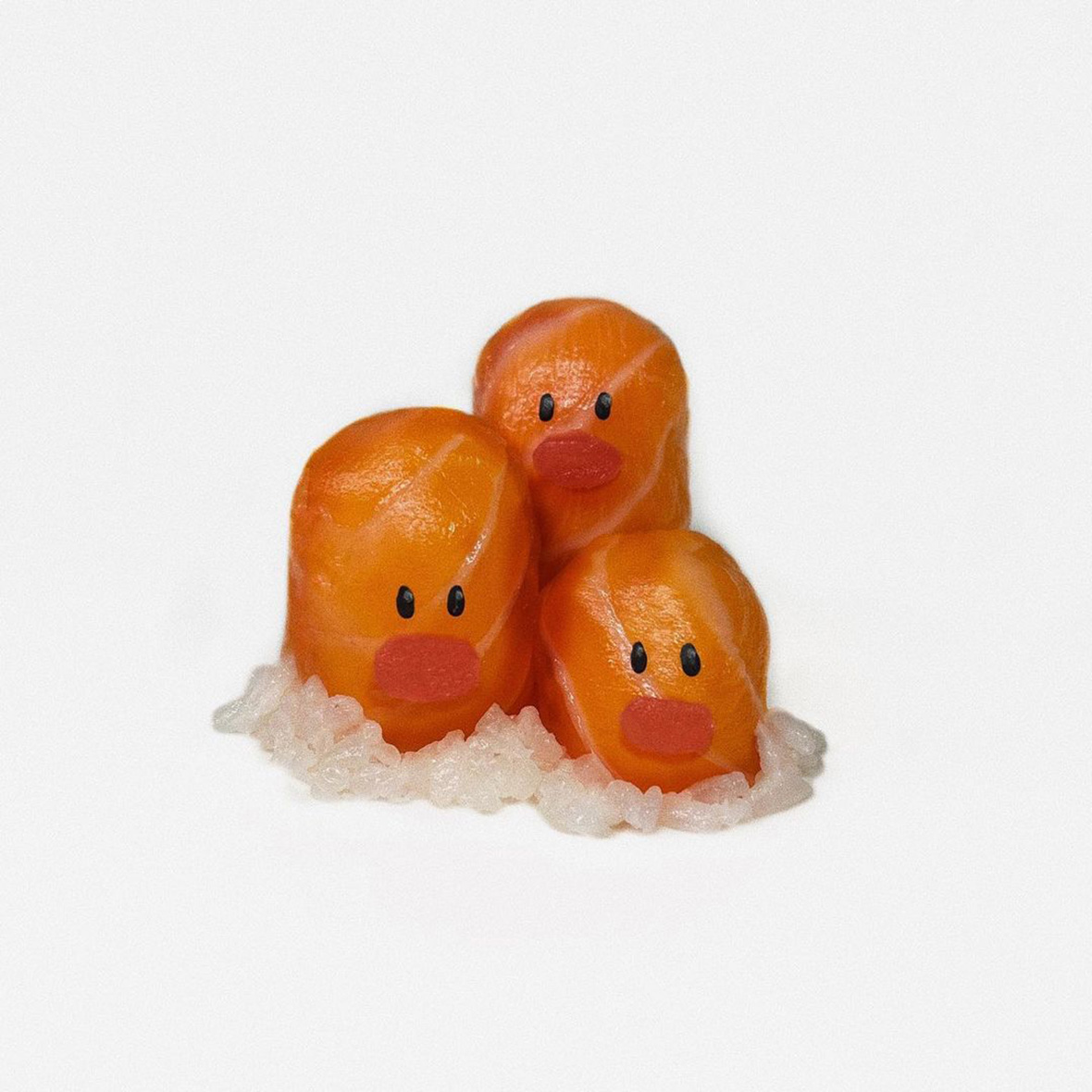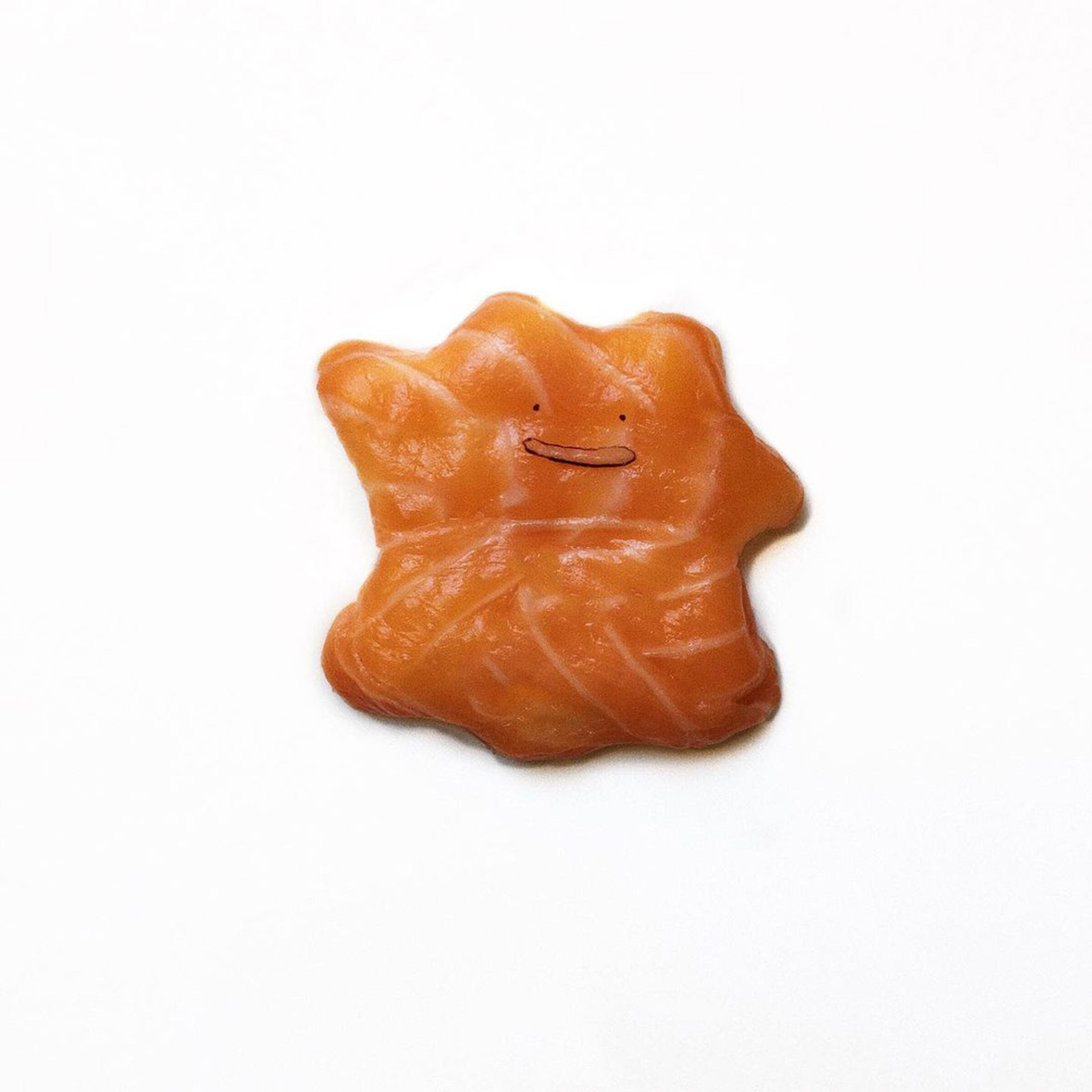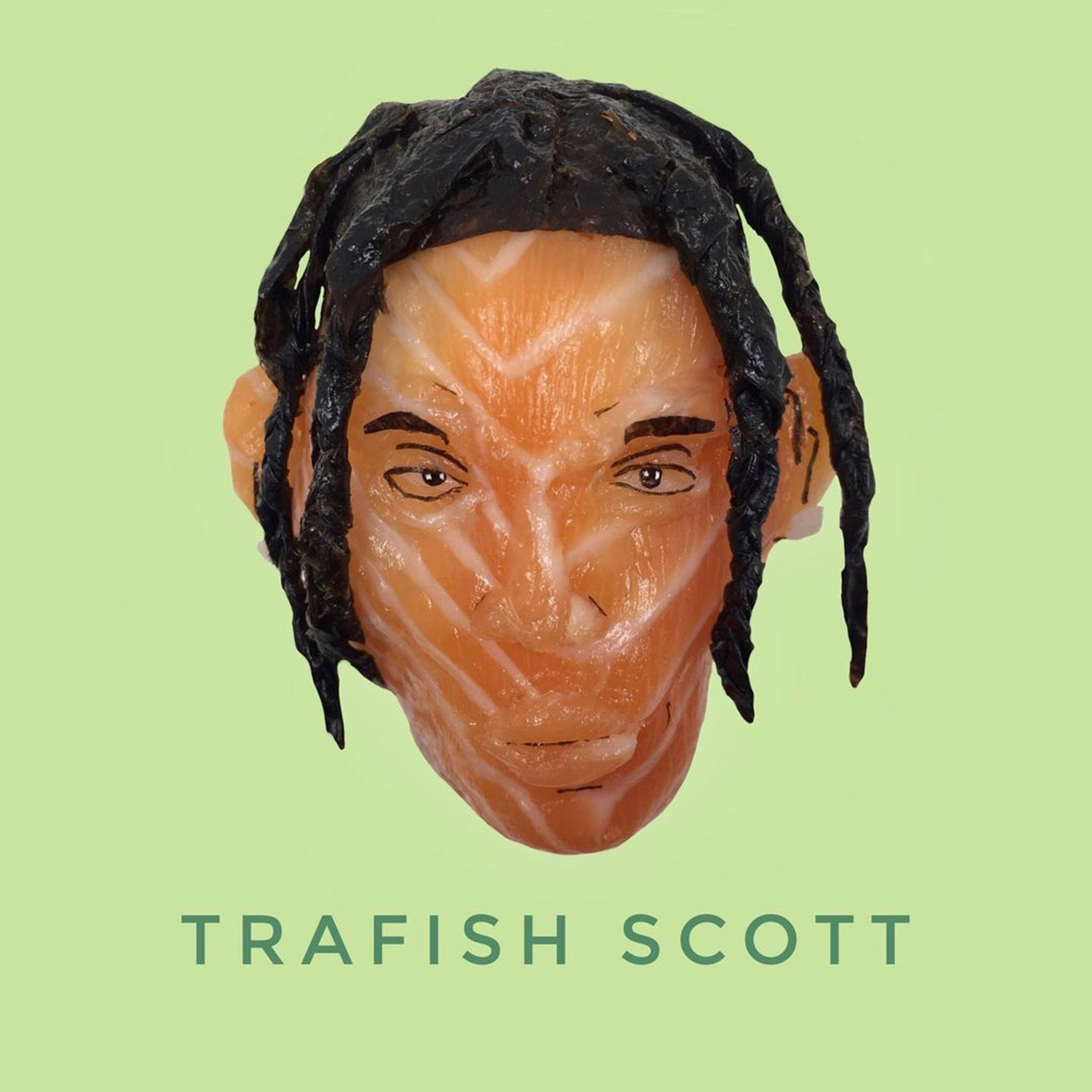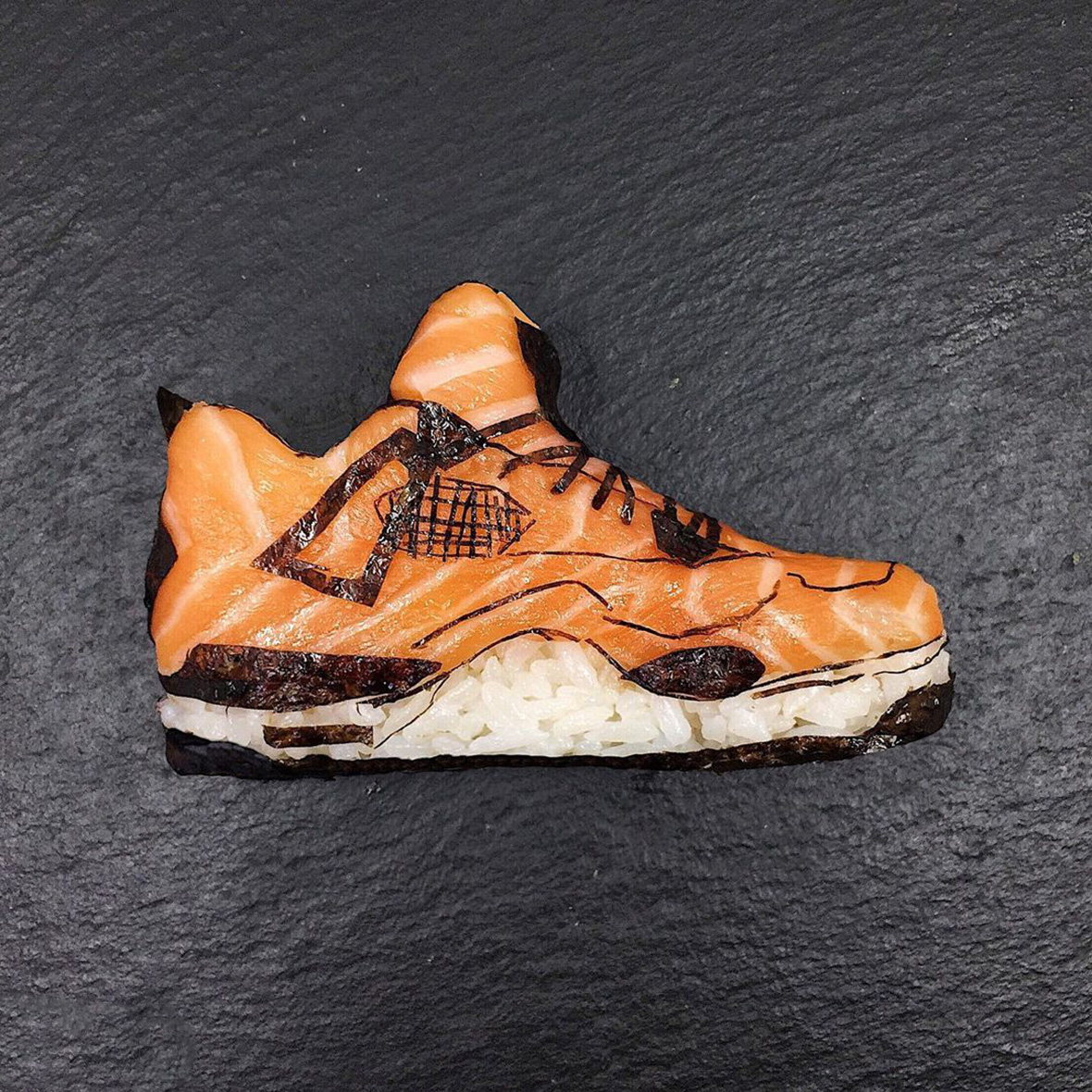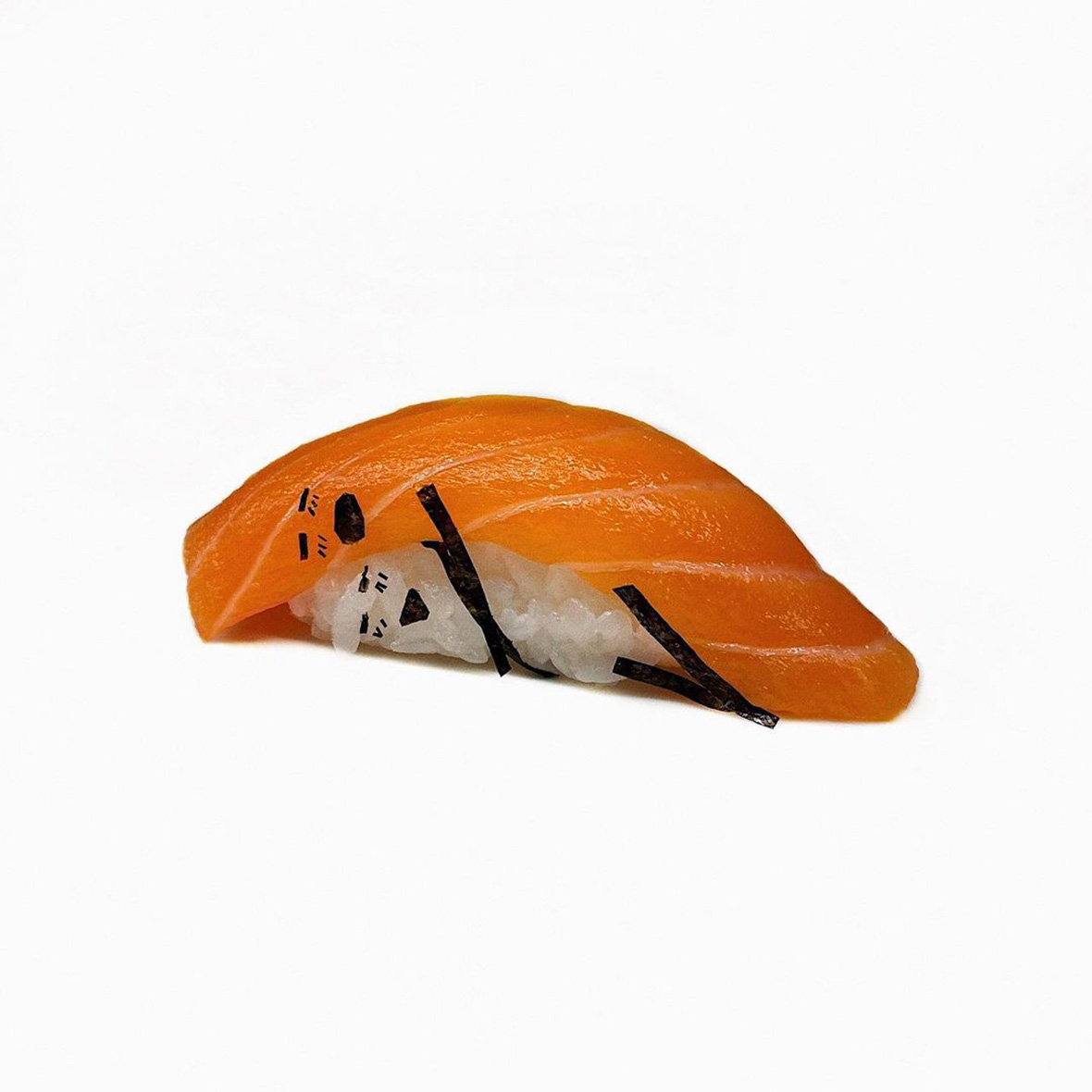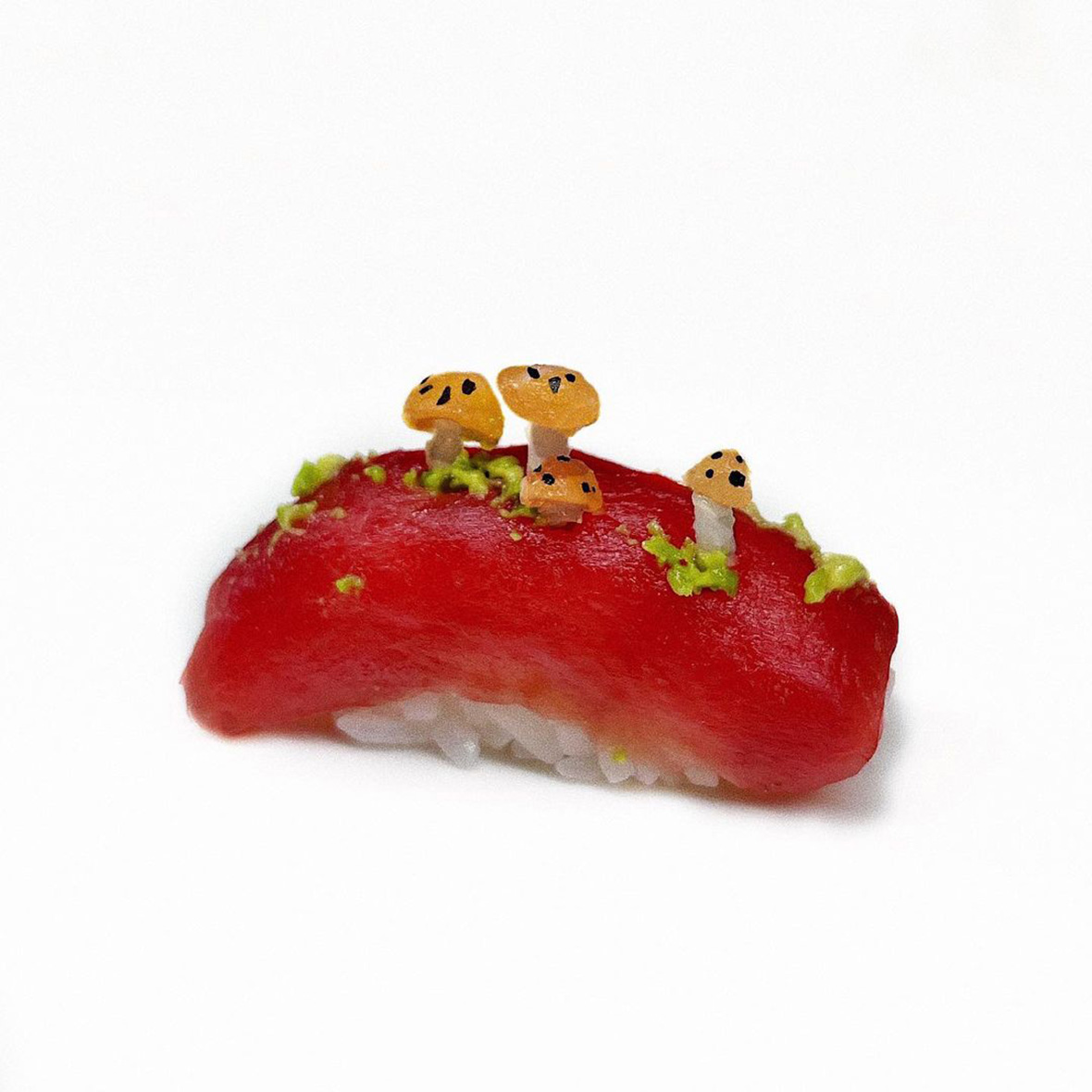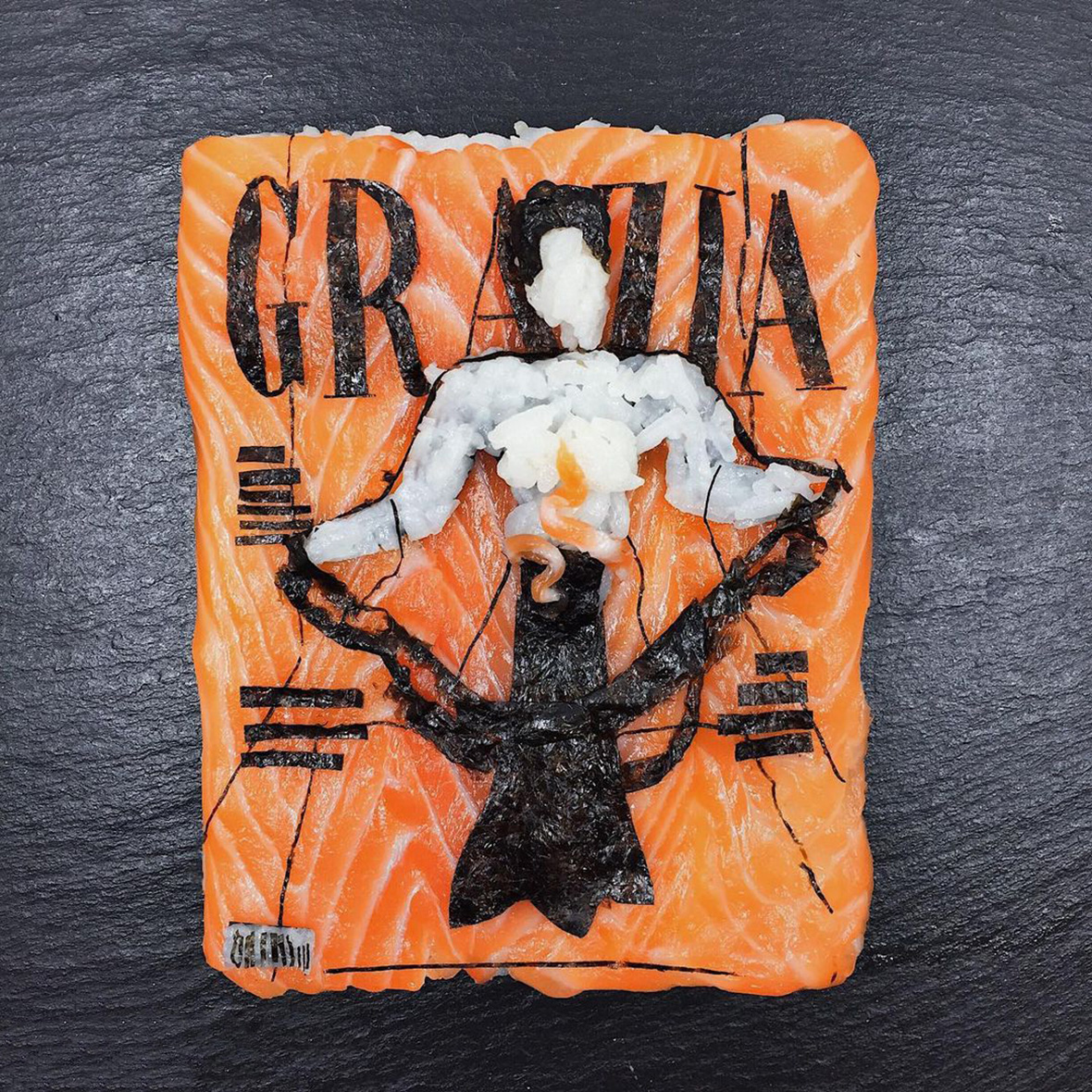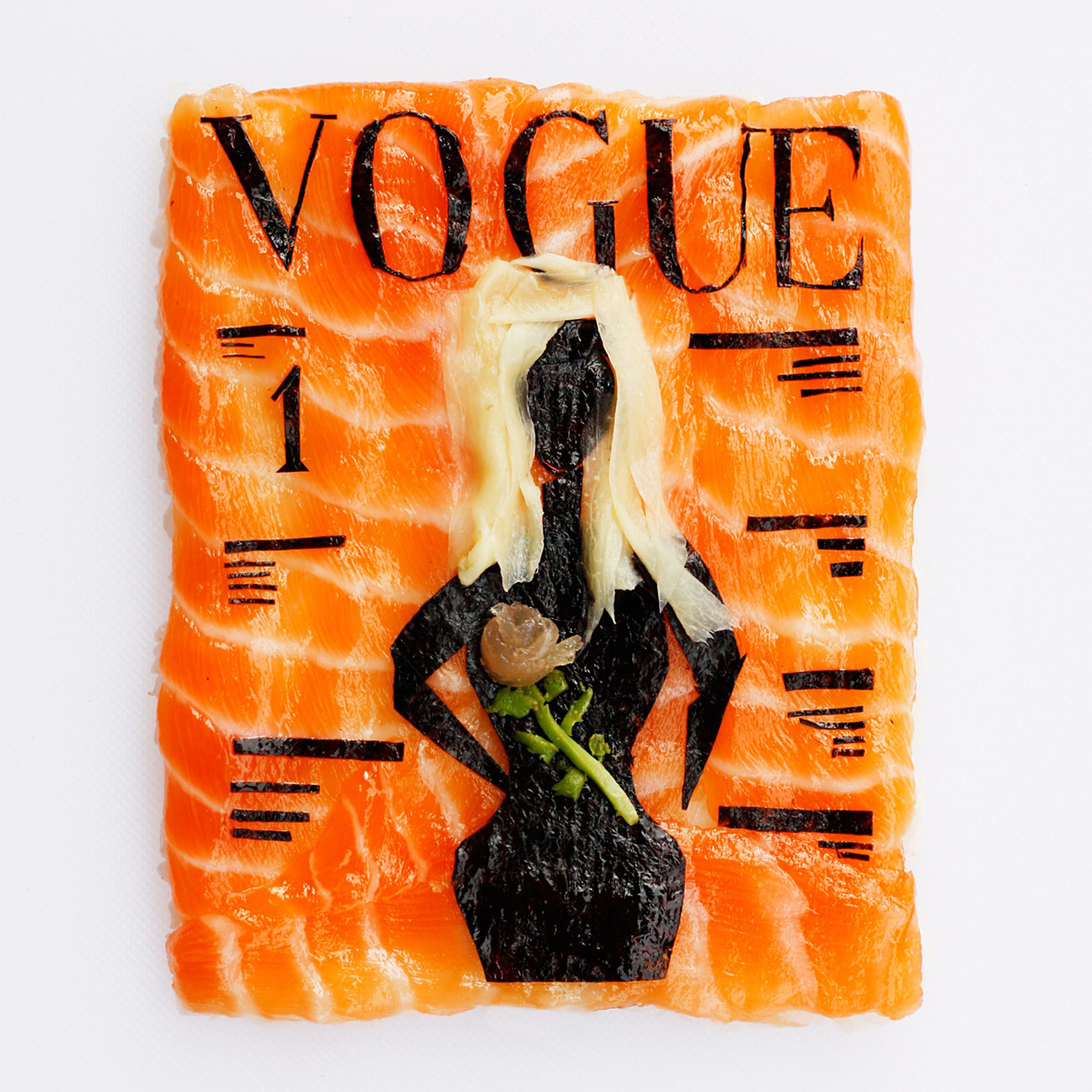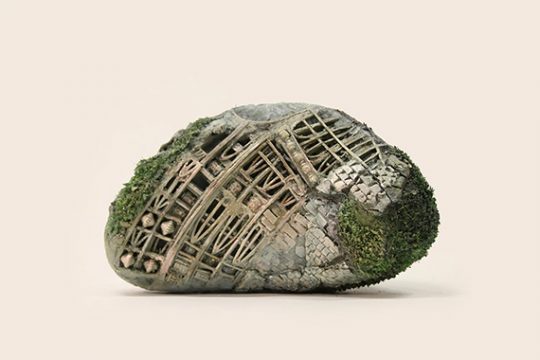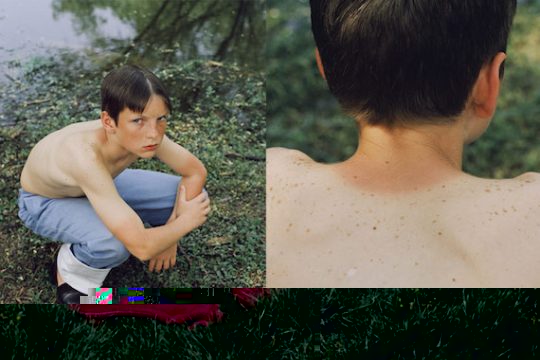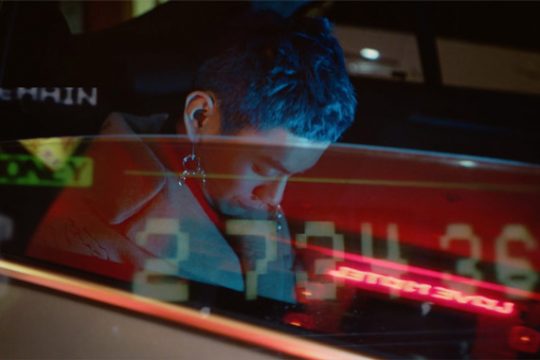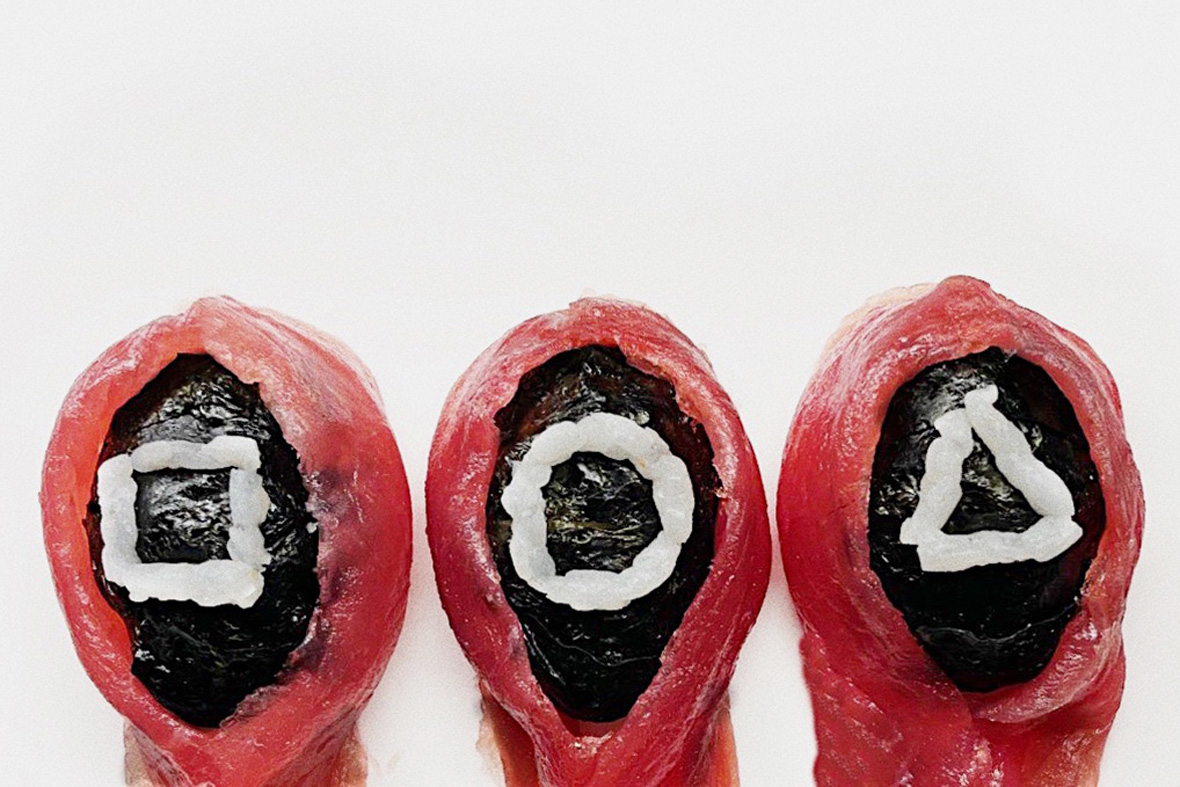
Netflix’s Squid Games has ignited a creative spark in people around the world. The unprecedented popularity of the Netflix hit and the strong visual motifs that define the show have inspired Halloween costumes, countless YouTube videos, and much more.
Similarly influenced by the show is Hu Yujia, a Chinese chef who’s made a name for himself as an “onigiri artist.” In a recent series of Instagram posts, he presents iconic characters from the show using nothing but raw fish, roasted seaweed, and sushi rice. For those familiar with his work, this isn’t anything surprising: pop culture has long been a topic of fascination for the imaginative taisho.
《鱿鱼游戏》在全世界范围内掀起了二次创作风波,无论是万圣节的制服狂欢还是 YouTube 博主的翻拍演绎,这个新生IP无疑赢得了大量艺术家的青睐——对寿司艺术家胡宇佳(Hu Yujia)来讲也不例外。定睛细看,你会发现他用简单的紫菜、三文鱼、白米饭、吞拿鱼就还原了剧中的木头人娃娃等反派角色,仿佛惊悚又紧张的游戏场景浮现眼前。他将这些作品称为“Onigiri Art”,取日语“お握り(饭团)”之意。这位厨师以寿司作为创作媒介,重新诠释着自己对流行文化的理解。
Hu was born in Wenzhou, a city in China’s Zhejiang Province. He was raised by his grandmother while his parents moved to Europe in search of better opportunities. At the time, migrant Chinese in Italy often followed one of two entrepreneurial paths, either running clothing factories or Chinese restaurants. Hu’s parents settled on the former. “My parents got into the garment business early on in Milan, and when I was 8 years old, they decided I should move there with them,” he recalls. “Ever since then, I’ve called it home.”
Even as a kid, Hu’s creative spirit shined, and his artistic inclinations landed him a spot at a prestigious art high school in Milan. He intended to graduate and enroll in an art university, but that plan was derailed.
“Older-generation Chinese parents believe that working hard is more worthwhile than being book smart, which is the case with my parents,” Hu laughs. “At the time, they decided to open a sushiya with a master chef they had a great relationship with. They also considered me studying art to be a waste of time, so I might as well be a part of the family business. I heeded their decision and ended up apprenticing under the sushi chef.”
Little did Hu know at the time, this path would eventually lead him back into the art world.
胡宇佳来自浙江文成,自小与奶奶生活在一起,他的父母为谋求更好的生活质量,早早就去往欧洲打拼。在当时,去往欧洲务工的中国人大多只有两个选项:开服装厂、开中餐厅,而宇佳的父母正是前者。“我爸爸妈妈很早就去了米兰做服装生意,8岁的时候,家里把我送去和他们一起生活,然后我就在米兰扎根成长,直到现在。“
宇佳自小便展现出对艺术的过人天赋,他凭优异的成绩考上米兰的一所一流艺术高中——Liceo Artistico Umberto Boccioni,一路顺风顺遂的宇佳,本该在这所顶级学府进修五年(意大利的高中为五年制),然后如愿升入一所艺术大学。可是在他高中四年级时,念书的计划就被打破。”许多中国父母似乎都保持’读书无用论’的观点,我的爸爸妈妈也是这样子。他们遇到了一个做寿司的师傅,一拍即合,决定合作开一家日料店,然后又觉得我读艺术没有出路,还不如回家帮忙打理生意稳当,于是我就无奈地离开校园啦(笑),然后我就成了日料店的学徒。“有趣的是,这件事反而成为了宇佳真正踏上艺术之路的绝妙契机。
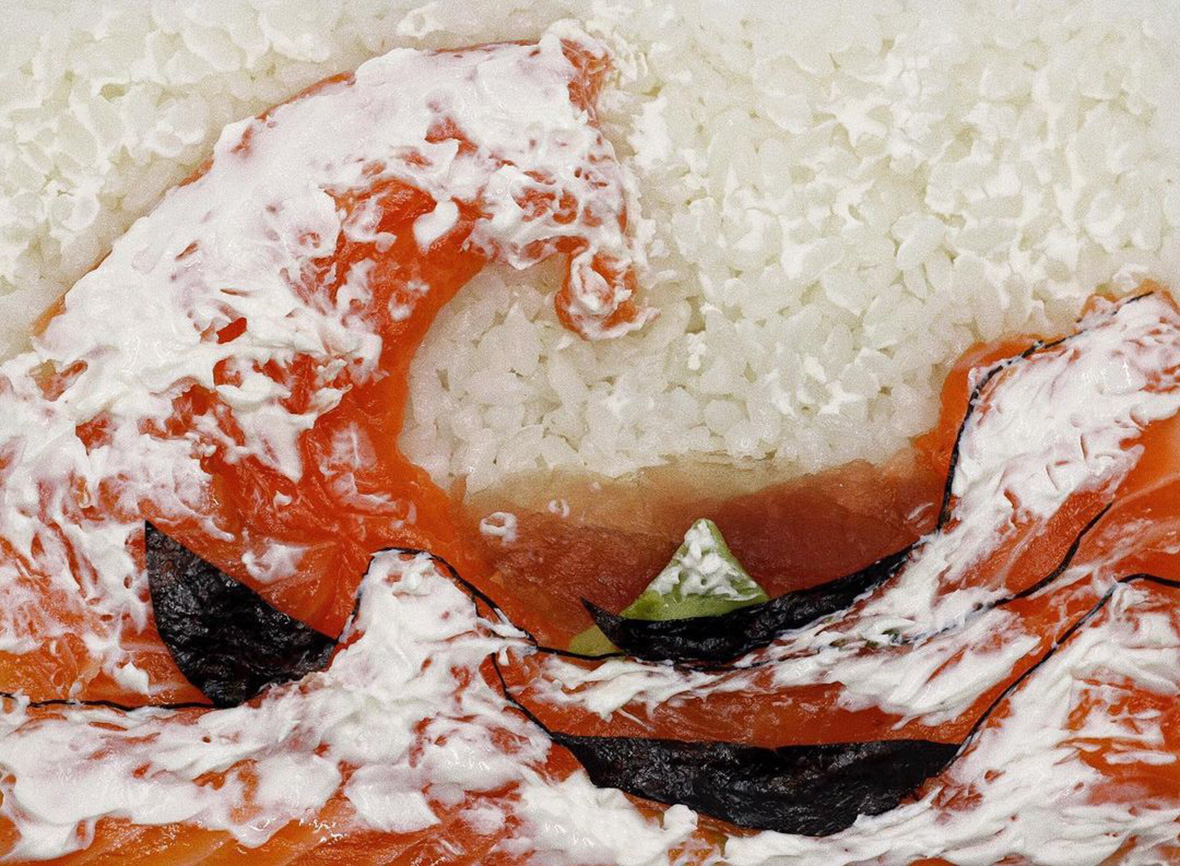
Environment doesn’t always dictate mindset, at least not for Hu. His creative flame was never extinguished working at the restaurant; it was a glowing ember waiting to be stoked alight. Sushi, as it turned out, would be the spark.
It all clicked into place when he realized that sushi rice could be more than just rice. Its malleability means that it could be used to sculpt in interesting ways. Experimentation with the unconventional medium soon followed. In this unexplored creative territory, trial-and-error was key, and the time he’s invested has led to some interesting earlier works, such as his sushi reproductions of Hokusai’s The Great Wave off Kanagawa and Edvard Munch’s The Scream. Instead of a painter’s palette and brush, he brandished a sashimi knife, making his kitchen an artist atelier in its own right.
环境的变化并不能改变一个人的信念。喜爱艺术的宇佳,开始在工作的同时寻找新的创作载体。不知何时,他发现寿司可以作为一种独特的创作介质,于是他抱着实验性的想法,开始基于寿司进行创作——在这尚未有人的创作领域里,一切创新都像摸着石头过河。在不断的尝试中,他终于摸索出自己的工作流。现在,哪怕还原难度较高的世界名作,如《呐喊》《神奈川冲浪里》等,宇佳都能信手拈来。他放下了颜料和画笔,也拿起了寿司刀和牙签,把各种材料裁切得恰到好处、摆放到位;他离开了画室,但他也把厨房变成了自己的”艺术战场“,杀出了一片天。
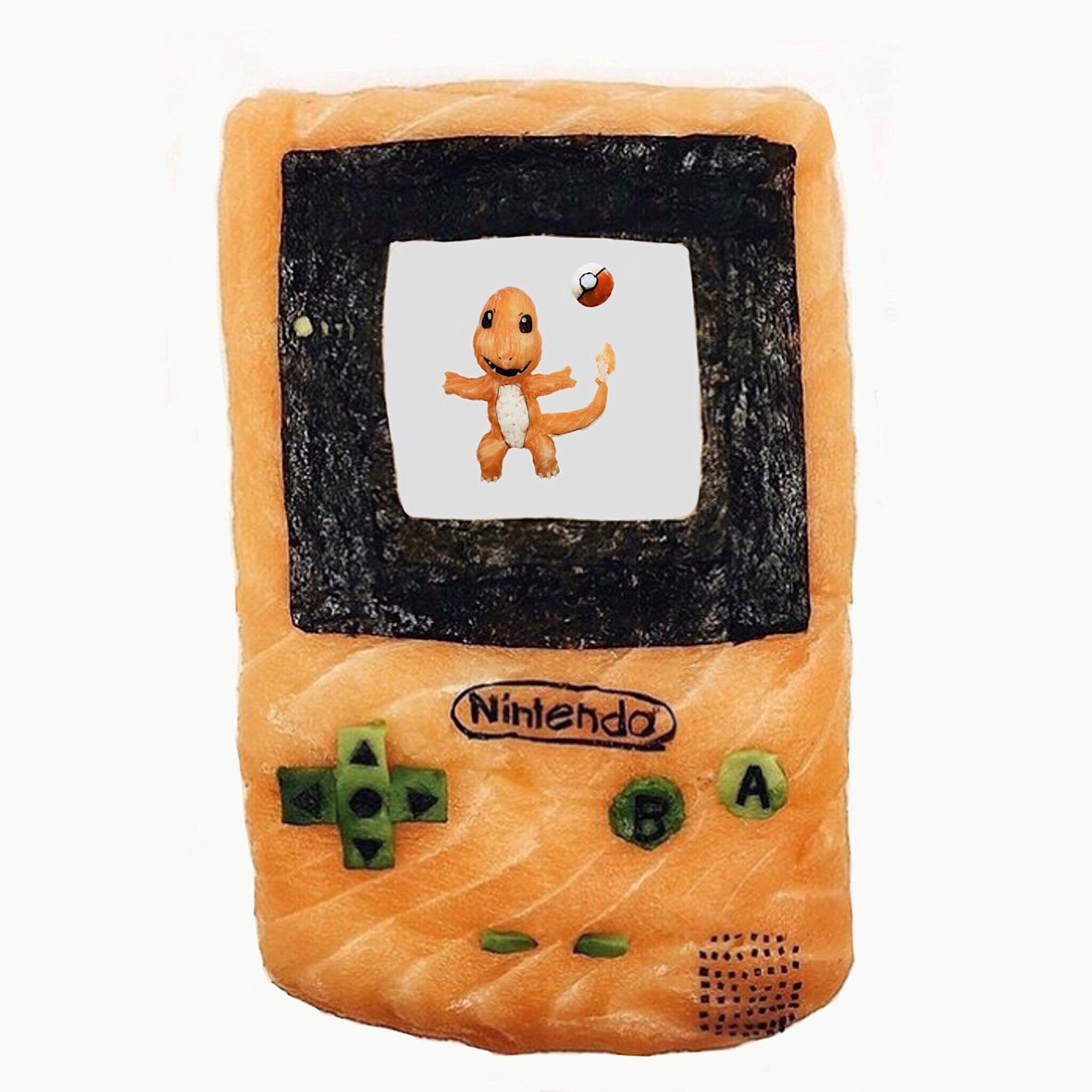
Hu’s inspiration now comes from a mix of pop culture and nostalgia, spanning across topics that range from video games and anime to the NBA and hip-hop culture. He’s created sushi replicas of the original Gameboy, first-generation Pokemon such as Pikachu and Charmander, characters from Dragon Ball Z, the astronauts from hit video game Among Us, and much more.
Portraits of NBA players and rappers also make frequent cameos in his work. Giannis Antetokounmpo, Future, Lil Uzi Vert, and more have all appeared in sushi form.
宇佳的灵感基本源于他对流行文化的观察,以及对童年记忆的怀旧之情。从满载一代人回忆的 Gameboy 游戏机,到童年经典《宝可梦》中的皮卡丘、小火龙,再到《龙珠Z》里的魔人布欧,又或是近年来在Z世代群体里话题度居高不下的《太空狼人杀》,无论是哪个年代的标志,这位“老男孩”都能捕捉为创作的素材。他的灵感也是多方面的:宇佳喜欢 NBA,于是他尝试用寿司捏出自己喜欢的球员的脸;他也喜欢嘻哈,于是他又为说唱歌手 Future、Lil Uzi Vert等人创作“寿司画像”;他对时尚有所涉猎,于是他开始创作一些时尚品牌的寿司艺术,最后还成功获得了 Vogue、Bulgari 等大牌的合作机会。
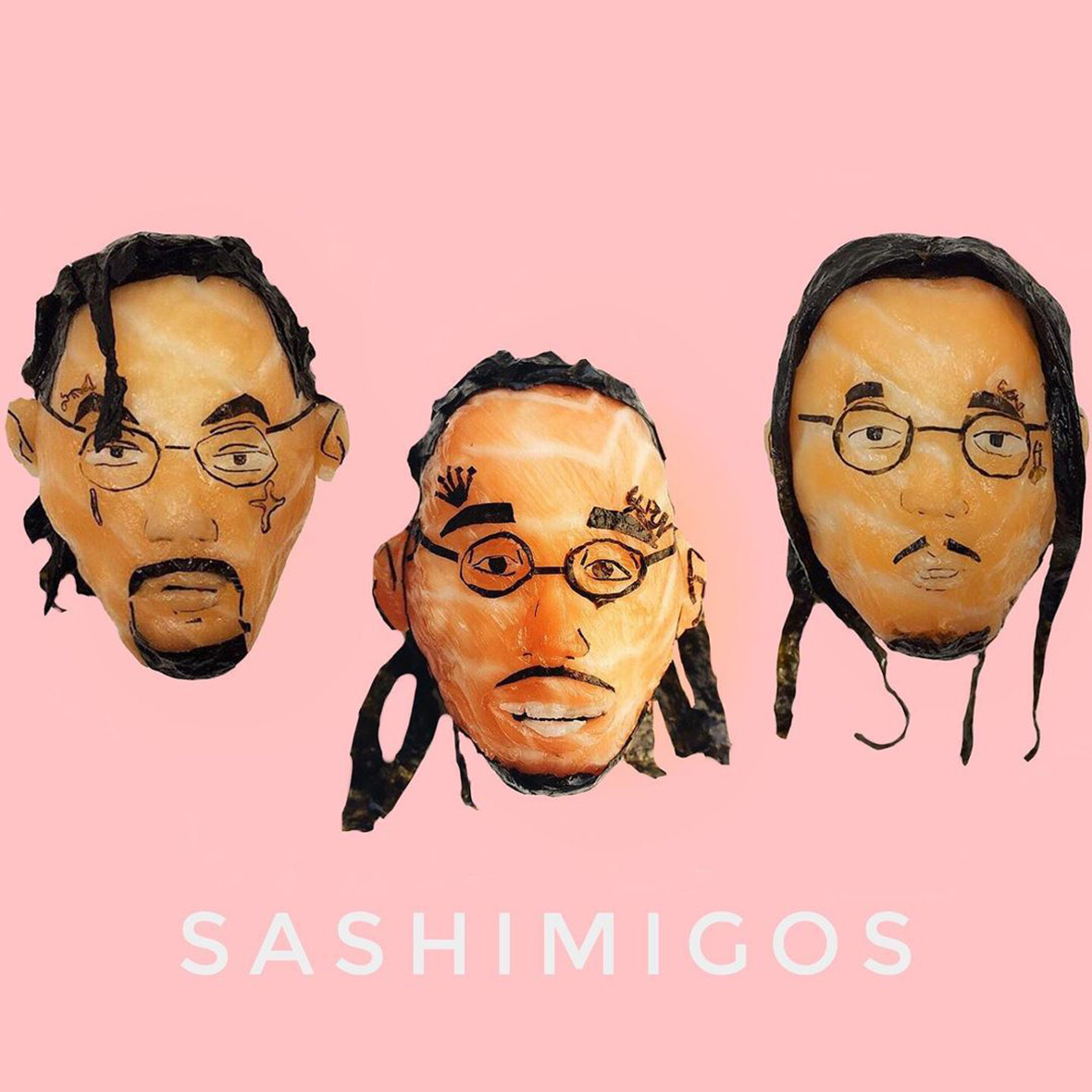
While this diverse range of works has made his sushi art incredibly memorable, what propelled him into the public eye was the much earlier series, Shoe-Shi. As the title implies, it consisted of sushi arrangements of his favorite sneakers. The project kicked off in 2017 when sneaker culture was at the height of its popularity, and his fish-fabricated sneakers quickly caught the attention of sneakerheads around the world, along with coverage from media platforms such as VICE and Highsnobriety. His family’s sushiya, Sakana, also shared the spotlight.
不过,让他真正“出圈”的,当属“Shoe-Shi”系列作品。2017年开始,正值全球范围的球鞋文化复兴,大众对于“球鞋文化”的狂热空前,他凭一双双用三文鱼和白米饭制作的“可食用球鞋”,击中了潮流爱好者的心,更被VICE、Highsnobiety 等潮流媒体争相报道,他担任主厨的日料店“Sakana Sushi”也被各地来访的媒体围得水泄不通。
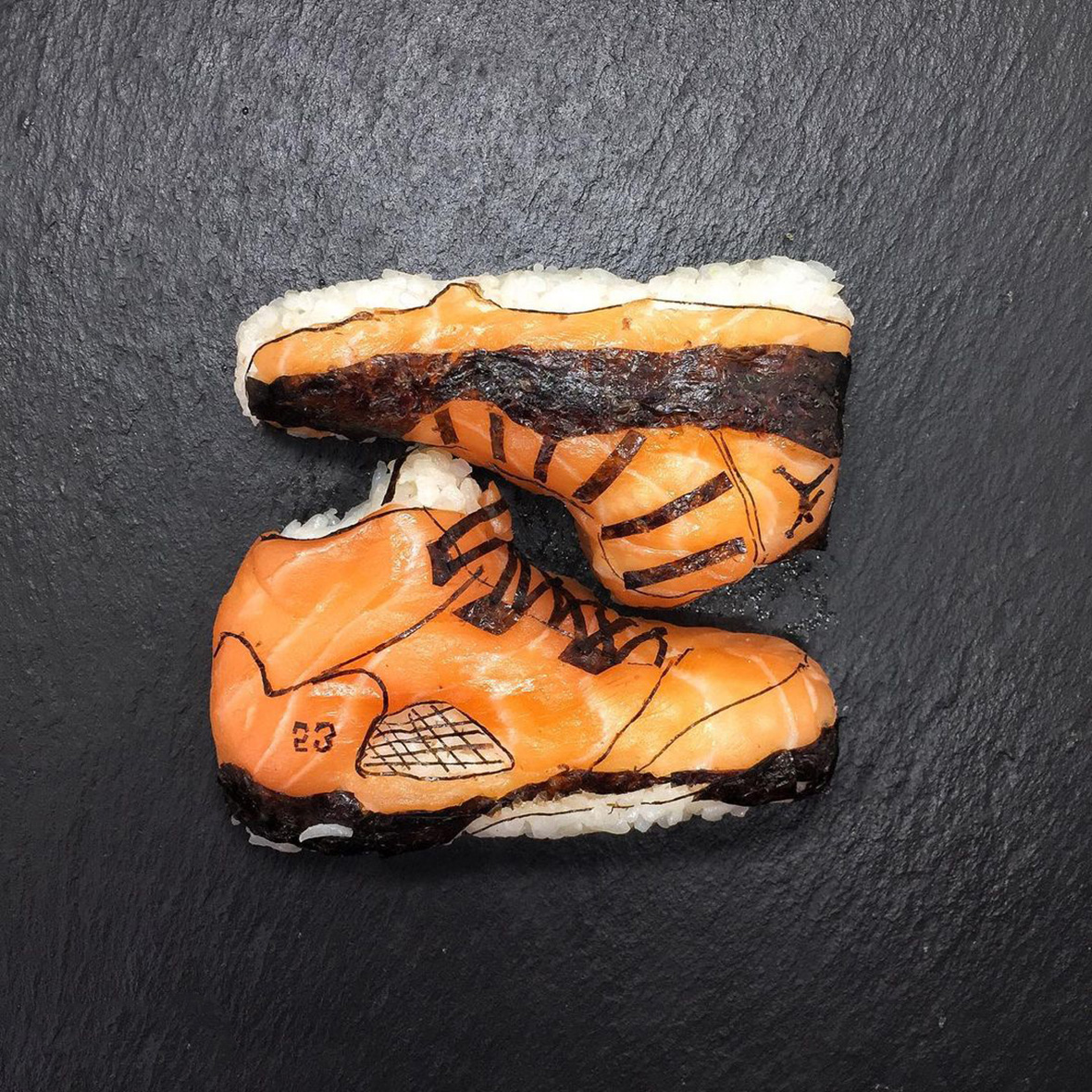
As his fame grew, so did his following. Like many artists, as their fanbase grows, there comes a struggle between appeasing public expectations and not neglecting their own creative urges. This balance is something Hu is always mindful of. “The only way is to adapt to change, to keep an explorative mindset and pushing forward,” he says. His work has since expanded to incorporate more ingredients, such as avocado slices, shrimp, and tuna.
One particularly memorable experience since his social media account took off was a trip to Shanghai, where he ran into a fan who asked for a photo together. This was an unexpected surprise. “Even now, when someone comes in the restaurant asking for me, or when I’m traveling and someone recognizes me, I’m always surprised,” he laughs. “I never thought so many people would see or like my work.”
The positive feedback he’s received has been instrumental in motivating him to continue, and in fact, he no longer even considers himself as just a chef experimenting with art, but rather an artist who’s passionate about food. “Even though my works are still based on my personal passions, the way I think about creating is completely different from before,” he says.
Hu has also toyed with the idea of posting on Chinese social media platforms to get his work in front of more people, but he has some reluctance. “Truth be told, with considerations to the cultural roots that my work taps into, it’s tricky to say how it’ll be received in my country,” he says. “I haven’t found the courage to share them there yet.”
知名度的上升,让他不得不开始考虑创作与流量的问题,至今他也一直在这两方面间寻求一个平衡。宇佳说:“我觉得求变的唯一途径就是不断实践、不断摸索。”现在他又加入了吞拿鱼、牛油果、熟虾等材料,逐渐丰富了他的武器库。
他回忆起某一次他回到上海,偶遇了一位忠实粉丝,还被邀请了合照,这令他惊喜不已。
“每当有某个地方的粉丝特地来店里找我,或是我去某个国家时别人认出了我,我都会非常惊讶——居然有这么多人在关注我的作品!”
如今,他在创作上投入了更多精力。从前他觉得自己是“身为主厨去做艺术尝试”,而现在他认为自己就是不折不扣的创作者。“尽管现在我也是出于爱好去做我的作品,但我明显感觉到创作的心境已经和之前完全不同了。”不过,想法的改变自然会带来压力,当商业邀约越来越多,他不得不开始思考两份工作之间的平衡关系。
他甚至开始思考扩大自己平台的可能性,由于中国的粉丝不少,他一直希望在中国的社交媒体上发布自己的作品,却一直抱有隐忧:“说实话,由于我创作背靠的文化,我感觉这在国内会是一个比较棘手的问题,这让我迟迟未能鼓起勇气将作品发表在这里。”
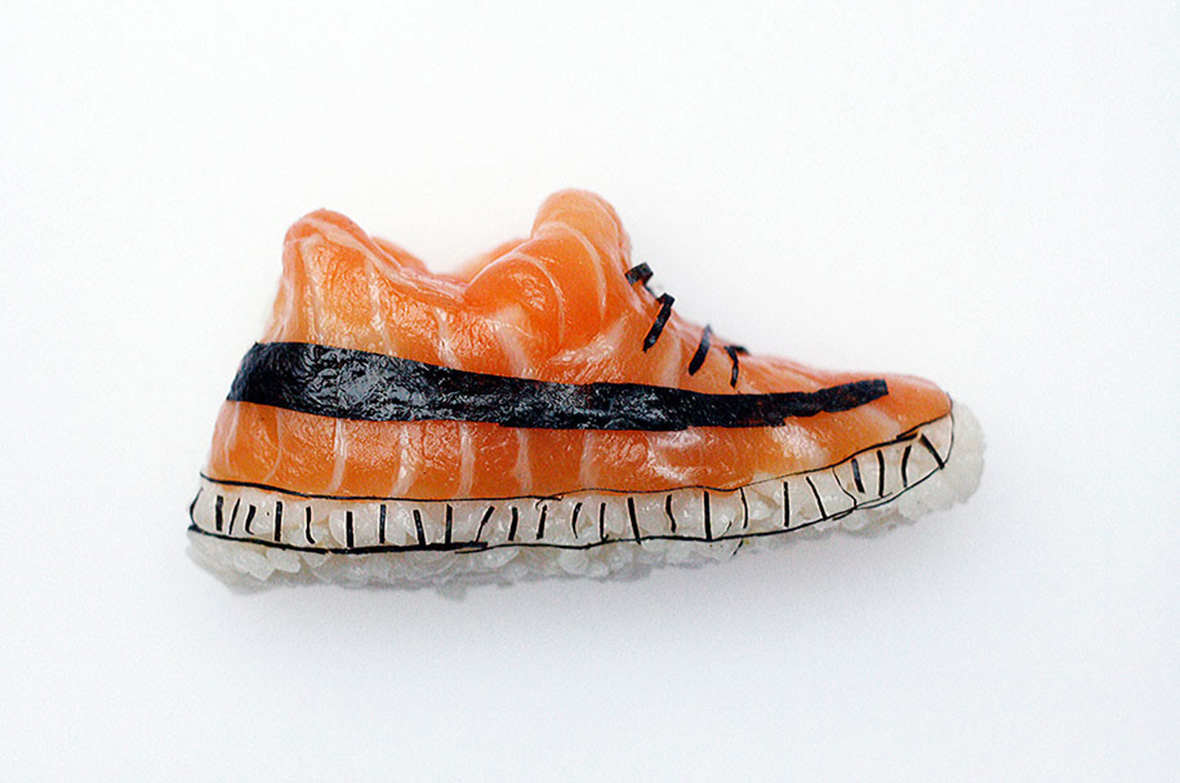
Fans from all over the world have visited Hu’s sushiya in Milan just to get a taste of his famous shoe-shi. He enjoys these special requests and seeing a customer’s face light up to one of his onigiri creations in person is something special. “It feels almost like I’m doing performance art,” he says. “Sushi to me is both food and art, so I don’t feel like a sushi chef anymore—I feel like an artist performing in front of an audience.”
These experiences have led him to reflect on the boundary between food and art. Where does the line begin and end? “I always wonder if customers consider whether my Shoe-shi creations were artwork or just another dish,” Hu says.
常有世界各地的粉丝来宇佳的店里拜访,只为了吃上他亲手做的 Shoe-Shi,他也会乐此不疲地做给客人们吃,并观察他们的反应。“我觉得这就像表演艺术,因为寿司对于我来讲既是食物,也是艺术品,所以我不觉得我像’大将’(寿司店的主厨),我感觉我在粉丝面前表演创作。”
这些经历也让他突然萌生了一个想法:食物与艺术品的界限,究竟在哪里?宇佳说:“我很好奇,当我把一个个成品的 Shoe-Shi 端出来之后,客人眼里的究竟是食物还是艺术品?”
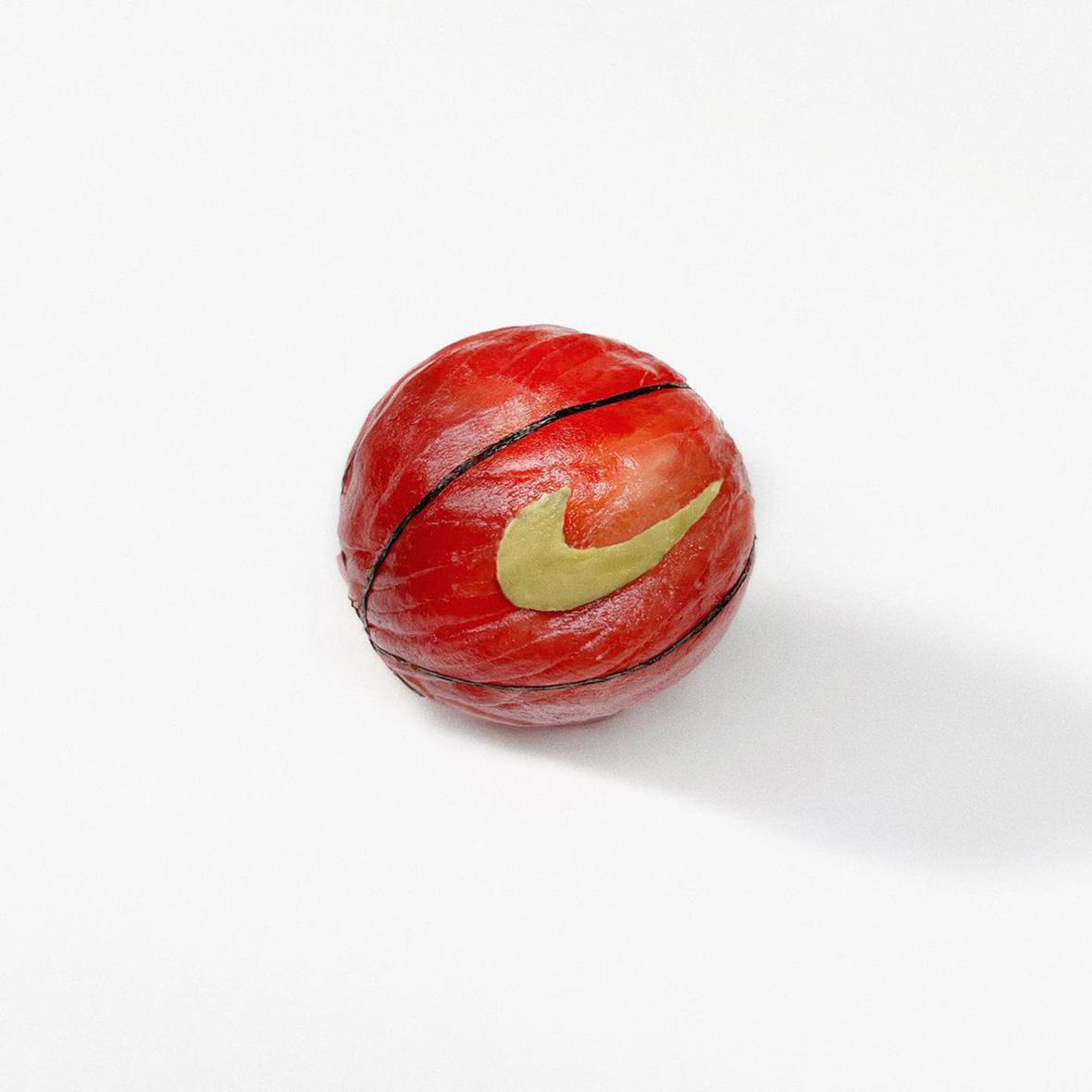
From his observations, some customers seem to just consider his work as just whimsical food, which can be slightly disappointing. “It’s unsurprising though, considering that my medium of choice will influence these reactions,” he notes. “No matter what, my onigiri art must return to their original essence, which is something destined to be eaten.“
Hu still values the appreciation, even if it’s only at a surface level. He even draws parallels between these customers and the media coverage he’s received. “I’m honored about being interviewed and featured on Western media,” he says. “But if they’re more eager to learn more about the creative process behind it, that’d be even more exciting.”
In this age of internet fame, he’s seen how artists have pigeonholed themselves once they find success with a particular work. This is something he doesn’t want to happen with his onigiri art, hence the reason he’s expanded his work beyond shoe-inspired sushi. “If people mention me in the future, I want to be thought of as a sushi artist,” he says. “I don’t want to just be thought of as the guy who made shoe-shi.”
经过他的反复观察,他发现客人更多的还是以半猎奇的心态去品尝一份食物,这让他有一丝微妙的失落。“不过也正常,毕竟我的创作性质决定了一切,这些 Onigiri Art 无论如何,最后还是要回归它们本来的‘功用’的,那就是作为食物被人类吃掉。”他顿了一下,又补充道:“不过这就和那些来采访我的美国媒体差不多,虽然我感到十分荣幸开心,可如果他们能更多关注我背后的创作理念,我想会更好吧。”
他目睹了许多艺术家因为某件作品走红之后,再无创意发挥而变成了陨落新星。所以他十分害怕自己被 Shoe-Shi 束缚住拳脚。“我希望以后别人提及我的时候,会把我称作寿司艺术家,而不是’那个做了 Shoe-Shi’的人,这对于一个艺术工作者来讲真的很重要。”
On October 5, 2018, Banksy made ripples in the art world when his Girl with Balloon painting was partially destroyed via a hidden shredding device the moment that the painting was auctioned off for 1.4 million dollars at Sotheby’s. In an Instagram post, Banksy posted a quote by philosopher Mikhail Bakunin: “The urge for destruction is also a creative urge.” The piece was later re-titled Love is in the Bin and auctioned again at a staggering 25 million dollars, close to 20 times the valuation of the original work.
Hu, a longstanding Banksy fan, was deeply inspired by this act by the art-world renegade. He became interested in the ephemeral nature of art, and how destruction doesn’t necessarily lessen the artistic value of a piece of work. This led him to wonder about the possibility of opening a sushi art museum, where he would create unique sushi art that would be displayed one day before being eaten.
“This idea is tied to two lines of thinking. First, I want my art to return to its essence of being food, and food in itself has a limited shelf life. Secondly, I believe this immortalizes each piece, in that in being consumed digested, it’ll eventually return to the natural world,” Hu grins. “Banksy destroyed his own artwork, so why can’t I eat mine?”
2018年10月5日,在伦敦苏富比拍卖行,英国街头艺术家 Banksy 在他作品的画框里秘密安装了碎纸机,亲自将他的《手持起球的女孩》一作粉碎,并留以哲学家米哈伊尔·巴枯宁的名句——“破坏的欲望即创造的欲望”向世人揭晓了他此举的缘由。随后,该作品以《爱在垃圾桶里》的名义成交,价格达1850万英镑,反超原作二十倍之多,引起全世界艺术爱好者哗然。
作为 Banksy 的忠实粉丝,宇佳被这种“游侠”般随性的创作思想启发。他意识到,一件作品的短暂性、可破坏性,也有可能为作品赋予新的价值,要想永远保留一件寿司艺术,并不需要靠防腐剂的堆砌,来使作品的“肉身”永存。他希望未来能创设一个“寿司艺术博物馆”,在那里,他将每天展出一件现场制作的寿司艺术品,在展柜摆放一天后,再当着展览者的面把它吃掉。
“之所以我会这么做,原因有二。”宇佳笑着说:“一是因为我的作品要回归到食物这一层面上,毕竟食物可不能储存太久嘛;第二点是因为,这是一种让作品真正不朽的办法,来源于自然的东西,终究要经过我们的消化,回到自然中去。这有种’不破不立’的味道,通过破坏它,反而能去维护它的艺术价值。”
在他看来,这么做还有一种 Banksy 式的浪漫:“他亲手粉碎了他的作品,那么我为什么不可以亲自吃掉我的心血创作呢?”
Like our stories? Follow us on Facebook and Instagram.
Facebook: ~/theonigiriart
Instagram: @theonigiriart
Contributor: Senki Yu



